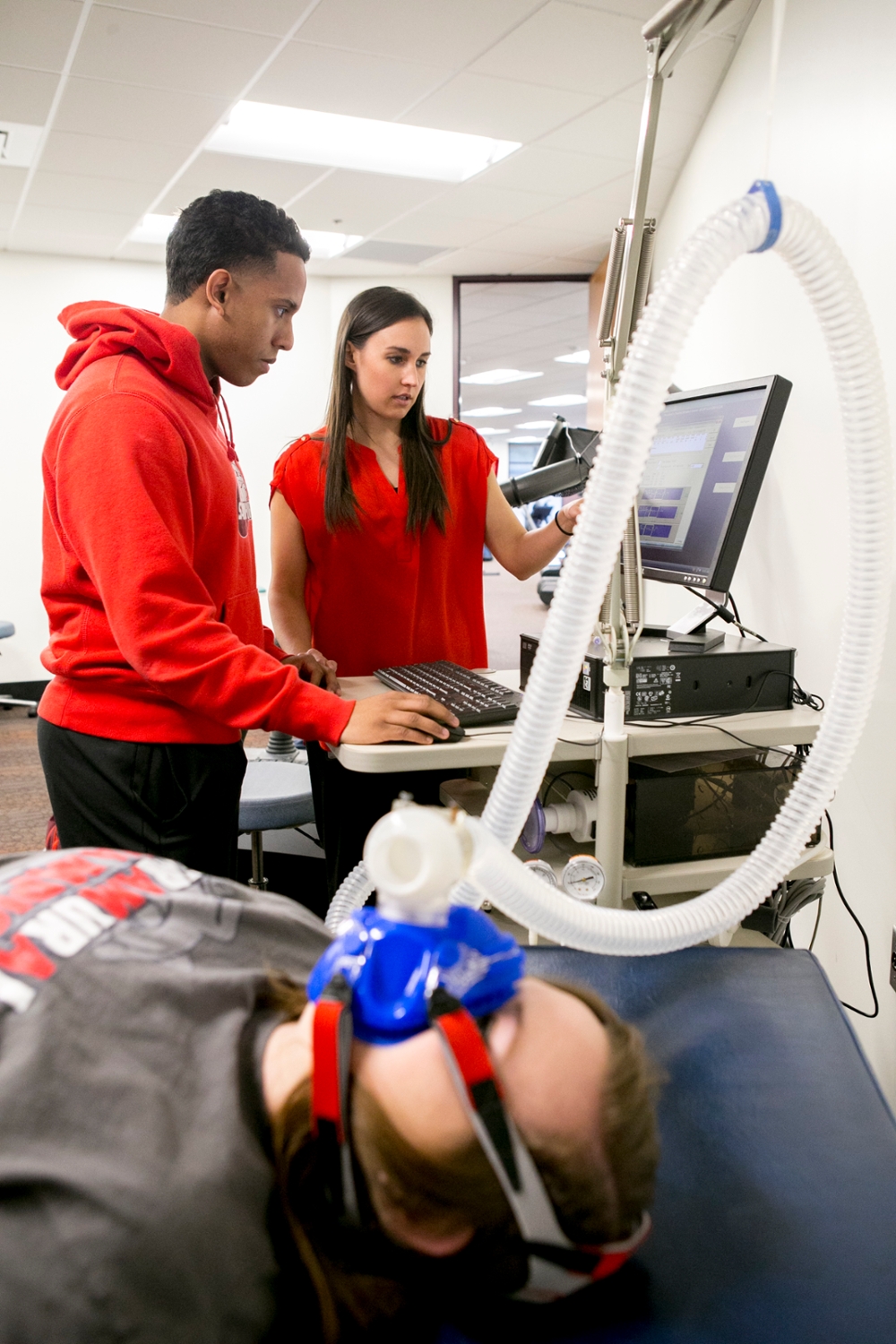
Samford University’s School of Health Professions prepares skilled caregivers who are committed to serving others. Across the curriculum, faculty are challenged to enhance student outcomes by providing experiential learning opportunities for students. The school’s Department of Kinesiology has taken this challenge in stride by developing one of the most unique undergraduate research programs in the nation.
In 1993, the Department of Kinesiology introduced research to its undergraduate programs. Each student was required to complete an individual research project over a 15-week semester, a progressive requirement for its time. Today, the program is still in the forefront of undergraduate research in kinesiology.
Undergraduate research is now recognized as a critical component of today’s science-based undergraduate programs, but with more than 20 years of implementation and research on the topic, Samford University’s Department of Kinesiology offers a distinctive research curriculum.
As undergraduates, kinesiology students are required to take three research courses progressing over three separate semesters. Students are paired with a faculty research mentor and are guided through the proposal, methodology and development of their research projects. With the help of the faculty member, students conduct a full proposal of their choosing. The three-semester research process, individualized faculty mentorship and the student-led hypothesis are all unique when compared to the national standard.
“The faculty member assists the student in developing a strong hypothesis, but the topic is selected by the student,” said John Petrella chair of the department of kinesiology. “The research process impacts valuable learning objectives that have lasting influences as undergraduates prepare for professional service. Students are gaining the ability to integrate theory and practice within the research topic of their choosing.”
Students have completed significant mentored research on topics such as, the effect of music preference on exercise performance, the use of signage to increase stair usage and physical activity, neural priming and pitching velocity, validity of activity trackers in measuring physical activity during pregnancy, velocity of movement predicting muscular fatigue, and the impact of ageing on dual tasking in cognitive and physical effort.
The academic model is intended to enhance student learning regardless of a student’s interest in pursuing a career in research. “Ethical study and application of the scientific process develops critical thinking and independence which are necessary for achieving the highest standards of quality scholarship, service and leadership,” said Petrella. “The experience prepares our students to emerge as leaders in multiple professions after graduation.”
Recently, 2016 graduate Rebecca Salstrand was selected for an extremely competitive graduate assistant position where she will assist with a stroke research study. “I wholeheartedly attribute my selection to the fact that I submitted, alongside my application, a copy of the manuscript I drafted in my Samford research courses during junior and senior year,” said Salstrand. “I was able to share my writing ability and experience with the research process, and this gave me a clear advantage over the other applicants.”
With support from the department, 20% of the undergraduate students present research at local, state, regional, national or international conferences each year; many have also been published in peer-reviewed, indexed journals. Petrella has a goal of seeing the number of participants grow to 50%.
“Our students learn how to perform research, but they also develop independent critical thinking skills, oral and written communication skills and problem-solving skills that translate to arenas beyond the classroom or laboratory,” said Petrella. “For our purposes, this may be the primary goal of undergraduate research.”
